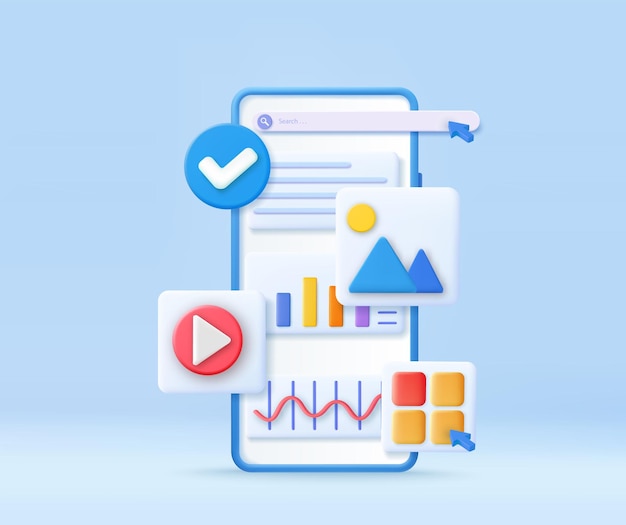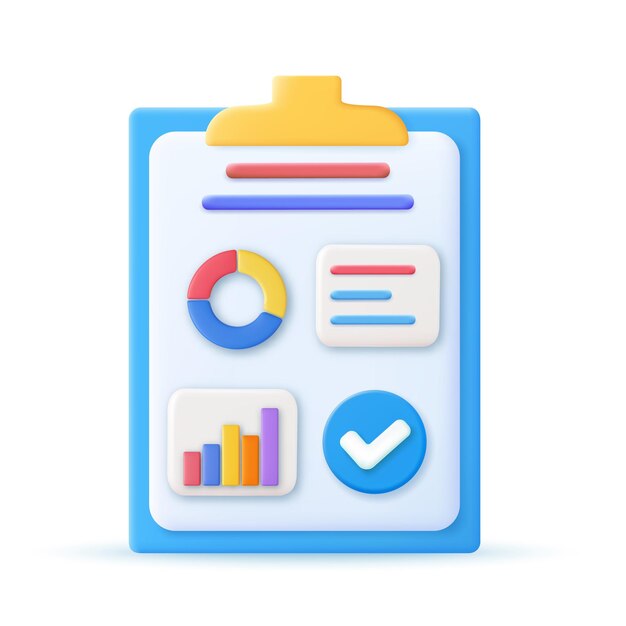Welcome to our comprehensive guide on what bounce rate is good and its importance for your website. In this article, we will delve into the concept of bounce rate, explore what is considered a good bounce rate, and provide you with industry benchmarks to help you evaluate your website’s performance. Understanding bounce rate is crucial for optimizing user engagement and improving your website’s SEO performance.
Table of Contents
What is Bounce Rate?
Bounce rate is a crucial metric in understanding user behavior on websites. It refers to the percentage of visitors who leave a webpage without interacting further with the site or navigating to other pages. A high bounce rate indicates that visitors are not engaging with the content or finding value in their visit, while a low bounce rate implies that visitors are exploring the site and engaging with its content.
To calculate the bounce rate, divide the single-page visits by the total number of visits and multiply it by 100. This formula gives you the percentage of visitors who bounced from your website.
Understanding bounce rate is essential as it provides insights into how well your website is meeting user expectations and delivering relevant content. It helps you gauge the effectiveness of your website design, user interface, and overall user experience. By analyzing bounce rates, you can identify areas for improvement, optimize your content, and enhance user engagement.
Bounce rate plays a crucial role in SEO performance as well. Search engines like Google take bounce rate into account when determining a website’s relevance and quality. A high bounce rate can signal to search engines that the website lacks value or fails to meet user expectations, potentially resulting in lower rankings.
Importance of Bounce Rate for User Behavior Measurement
To truly understand user behavior on your website, it is crucial to track and measure bounce rates. By analyzing bounce rate data, you can gain insights into how visitors interact with your site and make informed decisions about improving user experience and content relevance.
| Benefits of Measuring Bounce Rate | Actions to Take |
|---|---|
| Identify poorly performing landing pages | Optimize content and design to engage visitors |
| Understand user expectations | Personalize content and tailor it to user needs |
| Measure the success of marketing campaigns | Refine strategies and target relevant audiences |
| Identify navigation issues | Simplify website structure and improve user flow |
Why Bounce Rate Matters for User Engagement

When it comes to user engagement, bounce rate plays a critical role in determining the success of your website. Bounce rate refers to the percentage of visitors who land on your site and then leave without exploring any further. A high bounce rate indicates that users are not finding what they are looking for or are not drawn into engaging with your content.
To understand why high bounce rates are detrimental to user engagement, it’s important to consider the following reasons:
- Poor Relevance: A high bounce rate is often an indication that your website or landing page is not meeting the expectations of your visitors. Whether it’s due to irrelevant content, poor user experience, or mismatched keywords, users are quick to leave if they don’t immediately find what they’re looking for.
- Slow Load Times: In today’s fast-paced digital world, users have little patience for slow-loading websites. If your pages take too long to load, visitors are more likely to abandon the site and look elsewhere for the information or products they need.
- Confusing Navigation: Complicated navigation menus or a lack of clear direction can lead to frustration and a high bounce rate. Users want to find information quickly and easily. If they can’t navigate your site intuitively, they’re more likely to leave.
- Poor Design: A visually unappealing or outdated website can create a poor first impression, driving users away before they even have a chance to engage with your content. A modern and visually pleasing design can help captivate users and encourage them to explore further.
To ensure a positive user experience and improve engagement, it’s essential to address these high bounce rate reasons. By optimizing your website’s relevance, load times, navigation, and design, you can increase user engagement and encourage visitors to stay longer, explore further, and ultimately take the desired action on your site.
Website Bounce Rate Benchmarks

When it comes to bounce rate, knowing how your website performs about industry benchmarks can provide valuable insights into user engagement and overall website success. Understanding where your bounce rate stands compared to the average can help you gauge the effectiveness of your website’s design, content, and user experience.
Below is a comparison of website bounce rate benchmarks across different industries:
| Industry | Average Bounce Rate |
|---|---|
| E-commerce | 40-60% |
| Informational Websites | 50-70% |
| News and Media | 55-75% |
| Travel and Hospitality | 60-80% |
| Healthcare | 55-75% |
Keep in mind that these benchmarks can vary depending on factors such as the industry, target audience, and the specific goals of your website. It’s important to analyze your bounce rate in the context of your industry and make adjustments accordingly. If your bounce rate exceeds the benchmark, it may indicate a need for improvements in your website’s performance, content, or user experience.
Now that you have a clearer understanding of website bounce rate benchmarks, you can assess the performance of your website and take steps to optimize user engagement and overall SEO performance.
Factors Affecting Bounce Rate
In order to understand the reasons behind high bounce rates, it is important to consider several factors that can contribute to this user behavior. These factors include:
- Website Design: The design and layout of your website play a crucial role in capturing and retaining user interest. A cluttered or confusing design can lead to a high bounce rate as users may struggle to navigate or find what they’re looking for.
- Content Relevance: Providing relevant and engaging content is vital for keeping visitors on your website. If the content does not match their expectations or needs, they are more likely to leave quickly.
- Load Time: Slow website loading times can be frustrating for users, causing them to abandon your site and search for faster alternatives. Optimizing your website’s performance can significantly impact bounce rates.
- Mobile Responsiveness: With the increasing number of users accessing websites through mobile devices, it is crucial to ensure that your site is fully responsive. Non-mobile-friendly websites can contribute to higher bounce rates.
- Call-to-Action (CTA) Optimization: A well-optimized CTA can encourage users to take further actions on your website, reducing bounce rates. Clear and compelling CTAs that align with your content can improve user engagement.
By addressing these factors, you can minimize bounce rates and create a more engaging user experience. Let’s take a closer look at each factor:
| Factor | Impact on Bounce Rate |
|---|---|
| Website Design | A cluttered or confusing design can lead to high bounce rates. Ensure a clean and intuitive design to enhance user experience. |
| Content Relevance | Irrelevant or low-quality content can cause users to quickly leave your site. Focus on providing valuable and engaging content. |
| Load Time | Slow website loading times frustrate users and increase bounce rates. Optimize your website’s performance to improve load times. |
| Mobile Responsiveness | Non-mobile-friendly websites can drive away mobile users, leading to higher bounce rates. Ensure your website is fully responsive and mobile-friendly. |
| Call-to-Action Optimization | An ineffective or unclear call-to-action can result in lost opportunities for user engagement. Optimize your CTAs to prompt desired actions from visitors. |
Improving Bounce Rate: Optimization Strategies

When it comes to improving your website’s bounce rate and enhancing user engagement, there are several effective strategies you can implement. By optimizing various aspects of your website, you can encourage visitors to stay longer, explore more pages, and ultimately take the desired actions that drive conversions. Here are some bounce rate optimization strategies to consider:
1. Improve Website Speed
Website speed is crucial for keeping visitors engaged. Slow loading times can frustrate users and lead to higher bounce rates. Optimize your website’s performance by compressing image files, minifying code, and leveraging browser caching. Regularly monitor your website’s speed using tools like Google PageSpeed Insights or GTmetrix.
2. Enhance Content Quality
Compelling, relevant, and valuable content is essential for keeping visitors on your website. Make sure your content is well-written, easy to read, and provides solutions or answers to your visitors’ needs or questions. Consider integrating engaging visuals, such as images and videos, to captivate and retain user attention.
3. Optimize User Interface
A user-friendly and intuitive interface can significantly impact bounce rates. Ensure your website’s navigation is simple, making it easy for visitors to find what they’re looking for. Pay attention to the design elements, such as font size and color contrast, to enhance readability and accessibility.
4. Implement Clear Call-to-Actions
Well-placed and persuasive call-to-action buttons can guide visitors toward taking the desired actions, reducing bounce rates. Make sure your call-to-action buttons are prominently displayed, and visually appealing, and communicate the next steps you want visitors to take, such as signing up for a newsletter or making a purchase.
By implementing these optimization strategies, you can effectively improve your website’s bounce rate and enhance user engagement. Continuously monitor and analyze your website’s performance to ensure you are on the right track and make necessary adjustments if needed.
Bounce Rate Optimization Strategies
| Strategy | Description |
|---|---|
| Improve Website Speed | Optimize website performance by compressing image files, minifying code, and leveraging browser caching. Monitor speed using tools like Google PageSpeed Insights or GTmetrix. |
| Enhance Content Quality | Create compelling, valuable content that addresses visitors’ needs or questions. Integrate engaging visuals, such as images and videos, to captivate user attention. |
| Optimize User Interface | Create a user-friendly and intuitive interface with simple navigation. Pay attention to design elements, such as font size and color contrast, to enhance readability. |
| Implement Clear Call-to-Actions | Place persuasive call-to-action buttons prominently, visually appealing, and clearly communicate desired actions. Guide visitors towards interacting with your website. |
Understanding Bounce Rate Fluctuations
When it comes to analyzing the performance of your website, understanding bounce rate fluctuations is an essential aspect. Bounce rate refers to the percentage of visitors who leave your website after viewing only one page. Fluctuations in this metric can happen due to various factors, affecting user engagement and overall website performance.
It’s important to note that bounce rates can vary depending on different sources of traffic, such as organic search, social media, or referral links. Here are some key reasons why bounce rate fluctuations occur:
- Seasonal Trends: Certain industries experience seasonal patterns, resulting in fluctuations in user behavior. For example, an e-commerce website may see higher bounce rates during holiday seasons when users are browsing multiple websites for the best deals.
- Content Relevance: If your website content is not aligned with what visitors are expecting, it can lead to higher bounce rates. Regularly assess your content to ensure it meets the needs and interests of your target audience.
- Technical Issues: Slow page load times, broken links, or compatibility issues may drive visitors away from your site, resulting in higher bounce rates. Regular website maintenance and optimization can help mitigate these issues.
- User Intent: Sometimes, visitors may find the information or solution they need on the first page they land on, causing them to exit without exploring further pages. Understanding user intent and aligning your content accordingly can help reduce bounce rates.
To maintain a low bounce rate consistently, consider implementing the following tactics:
- High-Quality and Relevant Content: Ensure that your website’s content is engaging, informative, and relevant to the user’s search intent. By providing valuable information, visitors are more likely to stay on your site longer.
- Optimized User Experience: Improve the overall user experience by making your website easy to navigate, optimizing page load times, and ensuring mobile responsiveness. A positive user experience encourages visitors to explore more of your site.
- Clear Call-to-Actions (CTAs): Guide visitors to take the desired actions on your website through prominent and clear CTAs. This can help reduce confusion and encourage further engagement.
- Testing and Optimization: Continuously monitor and analyze your website’s performance to identify areas for improvement. Use A/B testing to experiment with different elements, such as headlines, layouts, and CTAs, to optimize your website’s bounce rate.
By understanding bounce rate fluctuations and employing effective low bounce rate tactics, you can improve user engagement, enhance website performance, and ultimately achieve your online goals.
| Reason for Bounce Rate Fluctuations | Impact on Bounce Rate |
|---|---|
| Seasonal Trends | Higher bounce rates during holiday seasons due to increased competition and visitor behavior. |
| Content Relevance | Misalignment between user expectations and website content results in higher bounce rates. |
| Technical Issues | Poor website performance, broken links, or compatibility issues lead to increased bounce rates. |
| User Intent | Visitors find the information they need on the first page and leave without further exploration. |
Analyzing Bounce Rate in Google Analytics
Google Analytics is a powerful tool that provides valuable insights into the performance of your website. When it comes to understanding your bounce rate, Google Analytics can be your best friend. By analyzing bounce rate metrics, you can gain a deeper understanding of how users interact with your website and identify areas for improvement.
Analyzing Bounce Rate Data
When analyzing bounce rate data in Google Analytics, there are a few key metrics you should pay attention to:
- Bounce Rate: This metric shows the percentage of visitors who leave your website after viewing only one page. A lower bounce rate indicates higher user engagement.
- Exit Pages: Identifying the pages on which users are more likely to exit your site can help you uncover potential issues or areas for improvement.
- Referral Sources: Analyzing the sources from which visitors arrive at your website can help you determine the quality of incoming traffic and its impact on bounce rate.
- Device and Location: Understanding how bounce rate varies across different devices and locations can help you optimize your website accordingly.
Tips for Interpreting Bounce Rate Data
Interpreting bounce rate data can provide valuable insights into user behavior and website performance. Here are a few tips to help you make the most of your analysis:
- Compare bounce rates across different pages and sections of your website to identify patterns and trends.
- Segment your data by demographic information, such as age, gender, or location, to gain a deeper understanding of your target audience.
- Set up conversion goals in Google Analytics to track user interactions beyond the bounce rate and measure the effectiveness of your website’s call-to-action.
Identifying Areas for Improvement
Once you have analyzed your bounce rate data, it’s time to identify areas for improvement. Here are some tactics to help lower your bounce rate and improve user engagement:
- Improve Page Load Time: A slow-loading website can lead to high bounce rates. Optimize your site’s load time by compressing images, leveraging browser caching, and optimizing your code.
- Enhance Content Quality: Create engaging, relevant, and valuable content that captures the attention of your visitors and encourages them to explore further.
- Optimize User Interface: Ensure your website’s design and navigation are user-friendly and intuitive. Make it easy for users to find the information they’re looking for.
- Optimize Metadata and Headlines: Craft compelling headlines and meta descriptions that accurately represent the content on your pages and entice users to click through.
| Metric | Definition |
|---|---|
| Bounce Rate | The percentage of visitors who leave your website after viewing only one page. |
| Exit Pages | The pages on which users are more likely to exit your site. |
| Referral Sources | The sources from which visitors arrive at your website. |
| Device and Location | How bounce rate varies across different devices and locations. |
What bounce rate is good on SEO
When it comes to SEO performance, bounce rate plays a crucial role in determining the success of your website. It refers to the percentage of visitors who leave your site after viewing only one page. A high bounce rate can negatively impact your search engine rankings and visibility.
Search engines take bounce rate into consideration when deciding how relevant and engaging your website is to users. If visitors quickly leave your site without engaging with the content or exploring further, search engines may interpret this as a signal that your website is not providing valuable information or a positive user experience. As a result, your rankings in search engine results pages (SERPs) may suffer.
To improve your SEO performance and increase your website’s visibility, it is essential to focus on reducing your bounce rate. Here are some tactics you can implement to achieve a low bounce rate:
- Create engaging and relevant content that captivates your audience.
- Optimize your website’s loading speed to ensure a smooth and seamless user experience.
- Improve your website’s navigation and user interface to make it easier for visitors to find what they’re looking for.
- Make sure your website is mobile-friendly, as an increasing number of users browse the web on their smartphones and tablets.
- Provide clear and compelling calls to action that guide visitors to explore more pages on your site.
By implementing these low bounce rate tactics, you can enhance user engagement, encourage visitors to spend more time on your website, and ultimately improve your SEO performance. Remember, a low bounce rate not only benefits search engines but also helps you retain and convert visitors into loyal customers.
Testing and Monitoring Bounce Rate
Continuous testing and monitoring of your website’s bounce rate is crucial in improving user engagement and optimizing your bounce rate. By regularly analyzing and evaluating the effectiveness of your bounce rate optimization efforts, you can make data-driven decisions and implement targeted strategies to reduce bounce rates and keep visitors engaged.
Here are some tools and techniques that you can use to measure and monitor the performance of your bounce rate:
1. Google Analytics
Google Analytics is a powerful tool that provides valuable insights into your website’s performance, including bounce rate. You can track and analyze bounce rates at various levels, such as the overall site, specific pages, traffic sources, and user demographics. Google Analytics also allows you to set up custom reports and goals to monitor bounce rate trends over time and measure the impact of your optimization efforts.
2. A/B Testing
By conducting A/B tests, you can compare different variations of your website’s design, content, and functionality to identify which elements contribute to a lower bounce rate. Through A/B testing, you can make data-supported decisions about what works best for your audience and iteratively improve your website’s performance.
3. Heatmap and User Behavior Analysis
Utilizing heatmap and user behavior analysis tools, such as Hotjar or Crazy Egg, can help you understand how visitors interact with your website. These tools provide visual representations of user actions, including click behavior and scroll depth, allowing you to identify areas of high engagement and potential user friction that may contribute to a higher bounce rate.
By leveraging these tools and techniques, you can gather valuable data and insights to inform your decision-making process and implement targeted strategies for improving your bounce rate. Remember, continuous monitoring and optimization are key to maintaining a low bounce rate and maximizing user engagement on your website.
Low Bounce Rate Tactics
Reducing the bounce rate is crucial for improving user engagement and maximizing the effectiveness of your website. By implementing the following tactics, you can keep visitors on your site longer and encourage them to explore further.
1. Compelling Headlines
One of the most effective ways to grab visitors’ attention and entice them to stay on your site is by creating compelling headlines. Your headlines should be concise, attention-grabbing, and relevant to the content they introduce. By using strong keywords and clear messaging, you can increase the likelihood of visitors clicking through to your pages and reducing bounce rate.
2. Clear Call-to-Actions
Having clear and prominent call-to-actions (CTAs) helps guide visitors through your site and encourages them to take the desired actions. Whether it’s signing up for a newsletter, making a purchase, or downloading a resource, ensure that your CTAs are visually appealing, easy to understand, and strategically placed on your pages. By providing clear next steps, you can lead visitors to engage further with your content and reduce the bounce rate.
3. Optimizing Landing Pages
A well-optimized landing page plays a crucial role in reducing bounce rate. Make sure your landing pages are visually appealing, easy to navigate, and provide valuable information. By offering relevant and engaging content, you can encourage visitors to continue exploring your site, reducing the number of visitors who leave immediately after landing on a page.
| Tactic | Description |
|---|---|
| Compelling Headlines | Create attention-grabbing headlines that entice visitors to click through to your pages. |
| Clear Call-to-Actions | Guide visitors with clear and prominent CTAs that encourage further engagement. |
| Optimizing Landing Pages | Create visually appealing and informative landing pages to reduce bounce rate. |
Implementing these low bounce rate tactics can significantly improve user engagement and lead to better conversion rates. By continuously analyzing your bounce rate metrics and making iterative improvements, you can ensure that your website provides a compelling and satisfying user experience.
Conclusion
In conclusion, understanding and optimizing bounce rate is crucial for the success of your website. By analyzing bounce rate data and implementing effective strategies, you can improve user engagement, enhance SEO performance, and drive higher conversions.
Throughout this article, we have explored what bounce rate is and how it is calculated. We have also discussed why bounce rate matters for user engagement, the industry benchmarks to compare with, and the key factors that affect bounce rate. Additionally, we have provided optimization strategies, tactics to maintain a low bounce rate, and tips for analyzing bounce rate data using Google Analytics.
Remember, a good bounce rate signifies that visitors are finding value and relevance in your website content, leading to longer site visits and increased conversions. By continuously monitoring and optimizing your bounce rate, you can create a seamless user experience, establish credibility, and ultimately achieve your website goals.




